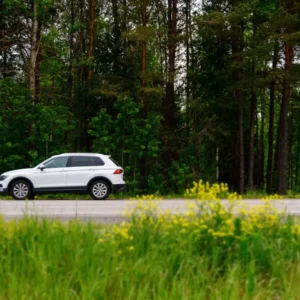Snowmobiling is a great way to get out and explore Ontario’s great outdoors. Before you do, we have a checklist of items that you’ll need to make your trip safe and enjoyable. Warm and waterproof clothes, water and snacks, duct tape, proof of insurance…
Every year, tens of thousands of Ontarians look forward to the first snow, because that means it’s almost sledding season! Ontario has 30,000 km of groomed snowmobile trails, so why not explore every last one?
But before you get out there, it’s important to remember that snowmobiling can be dangerous. You’ll be outside for hours at a time, sometimes in unpredictable weather and visibility conditions. You could be traversing frozen rivers and lakes. You will have to cross roadways, and very possibly will encounter cars or other sleds traveling at high speeds. You also have to account for the possibility that your sled will break down and leave you stranded where you are unable to get a cellular signal.
Sledding is meant to be fun. So think about being safe before you head out, so you can fully enjoy your experience.
What will you need?
Your sled, of course
Some of us have a shiny new sled, and some of us may have one with a little more experience. Regardless, it’s important to make sure your sled is in good condition before you set out for the riding season. A fall checkup with your local dealer or mechanic is a good idea.
It’s also recommended that you carry the following with you while sledding:
- Extra spark plugs and an extra drive belt
- Motor oil
- Duct tape and basic tools for minor repairs
Your papers
While sledding in Ontario, you need certain documents with you in case a police officer stops you:
- Proof of ownership/registration for your sled
- Trail permit sticker – Learn more – Permits – Ontario Federation of Snowmobile Clubs
- Proof of insurance
- Valid driver’s license or MSVOL
Remember that any tickets you get while sledding will affect your car insurance, and vice versa. Having all your permits and insurance in order is not a nice-to-have, it is the law. And failing to produce one or more of the above documents could have serious consequences.
Clothing
You may think you know what Canadian winters have to offer, but experienced sledders know that you need special gear to be safe and comfortable out on the trails. Temperatures can reach -30 degrees Celsius or colder, so no, your windbreaker probably won’t cut it.
You’ll want to wear:
- An inner layer of synthetic (non-cotton, ideally polypropylene) long underwear
- Warm wool or synthetic socks
- At least one middle layer made of a wind resistant material that will keep in heat
- A warm but lightweight facemask or balaclava
- A jacket and snow pants designed for snowmobiling (or what they call a monosuit)
- Warm, waterproof winter boots with a good tread for navigating ice and snow
- Warm, waterproof gloves, or ideally mittens
- An approved helmet
- If your helmet has no visor, goggles or sunglasses to protect your eyes from glare and debris
Try to avoid wearing cotton, because that will make you cold if it gets wet. And remember, more layers is always better. If you get too hot, shed a layer.
Safety gear
A few other things you might want to bring with you while sledding, just in case:
- A cellphone (to call for help and monitor weather conditions)
- A trail map (in case your phone dies)
- Two-way radios (walkie-talkies) in case you are separated from your group
- A first aid kit
- A blanket
- A lighter
- A foldable shovel
- An emergency whistle
- A tow rope
- A knife
- Water and snacks
Sled safely
Snowmobiling is a heck of a lot of fun, but it’s no joke. Snowmobiles are fast and powerful, which makes them dangerous. A few other tips to stay safe:
- Don’t use alcohol, cannabis or other drugs before or while sledding (all laws that apply to driving also apply to snowmobiles).
- Don’t speed. Maximum speed on any trail in Ontario is 50 km/h or 20 km/h in any public park.
- Even if you have a valid driver’s license, it’s recommended that you take a snowmobile safety course before riding.
- Always let someone know where you’re going and when you plan to arrive.
- Never ride alone.
- Never leave the trail.
- Stay off roads and railway tracks except where you need to cross them.
Learn more:
- The Official Ministry of Transportation (MTO) Driver’s Handbook for Off-road Vehicles and Snowmobiles
- The Motorized Snow Vehicles Act
Need insurance for your sled?
Mitch shares your love of adventure and the great outdoors, and we want to help you get out there. Snowmobile insurance won’t break the bank, but it is important that you get the right coverage for your circumstances. We work with more insurance companies than most brokers, so we have lots of options if you want them, but we can also get you set up with the basics in one quick call, so you can go and enjoy! Our brokers are waiting for your call.
Looking for snowmobile insurance?
Speak with a Mitch Insurance broker today to get a quote on Ontario snowmobile insurance. Learn more >
Call now
1-800-731-2228




